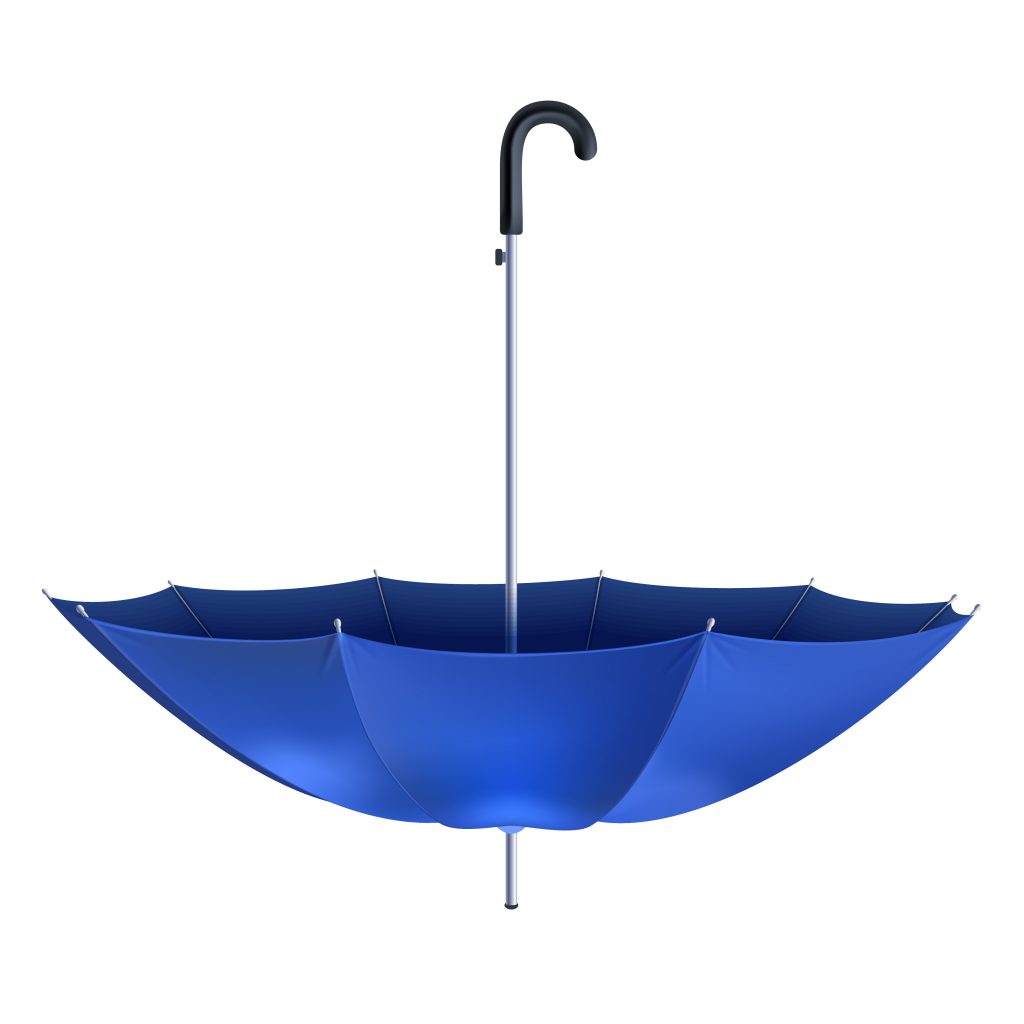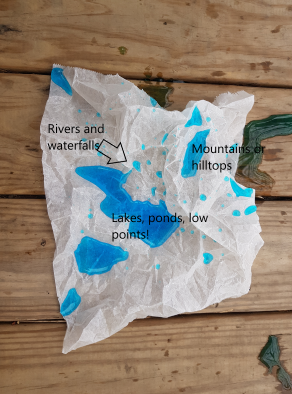A watershed is like an upside down umbrella.

Wait, what?
OK, let me explain. What is a watershed? A watershed is an area of land drained by a river and its tributaries (smaller creeks) to a common outlet. This outlet may be a basin, large stream, lake, wetland or ocean.
A watershed includes everything in its boundaries: land, air, surface water , underground water, plants, animals (this includes humans!), mountains, cities and forests.
So, imagine what an upside down umbrella looks like. The edges of the umbrella that point up are the highest points of a watershed (like mountains!) and the lowest points, or the middle of the umbrella, are the lakes and basins that water settles in.
Do you live in a watershed? Yes! Everyone lives in a watershed!
What watershed do you live in? Well, think of a map! And think of watersheds as a target on that map. There are circles inside circles.
I live in Tuscarawas County, Ohio. That belongs to the Tuscarawas River watershed, which is a smaller piece of a larger watershed known as the Muskingum River watershed. The Muskingum watershed then drains into the Ohio River watershed, which drains into the Mississippi River watershed and finally into the Gulf of Mexico, the final largest watershed of our target.
What watershed do you live in?
Explore these tools to find out:
USGS: Find your watershed
Model My Watershed
Model a watershed
Let’s visualize a watershed at home. You will need:
- Wax paper or aluminum foil
- A block (I’m using a tissue box)
- A small cup or eye dropper
- Food coloring (optional)
Step 1.
Lay the wax paper flat on a surface. Go outside or put down newspaper because it can get messy. Slowly place a drop of water on the wax paper.
Does it run off the paper or stay put?
Step 2.
Now make a ramp using your block (I used a tissue box) and the wax paper, as shown below. Making sure the top of your ramp is secure, slowly pour some of your water on the top of the ramp.
What happens when the water falls on a ramp? What if this were rain on a hill?
Step 3.
Fold your wax paper now down the center and make a tent. Slowly pour your water onto the peak of your mountain.
Where does your water drain to now?
The peak represents the boundaries between watersheds. There are now two different watersheds here: water that goes down the left side is in one watershed, water that goes down the right side is another.
Step 4.
Finally, loosely crumple up your wax paper. Carefully pour water over the peaks of your crumbled paper again.
Pay attention to where the water flows and what parts of your paper your water flows to.
- Does it pool in some areas?
- What watershed features can you see represented on your crumpled piece of paper?
- Where might you want to build a town or house on your watershed?
- Where might you find fish?
Let us know what you find on your mini watershed!

One reply on “What is a Watershed?”
Thanks for sharing! Very informative!!